
George Henry Gordon was an American lawyer and a Union general in the American Civil War.
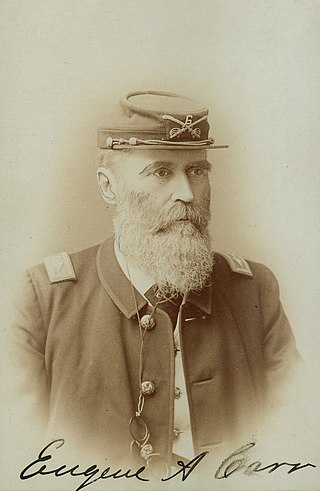
Eugene Asa Niel Carr was a soldier in the United States Army and a general in the Union Army during the American Civil War. He was awarded the Medal of Honor for his actions at the Battle of Pea Ridge.

Joseph Bradford Carr was a general in the Union Army during the American Civil War.

Carter Littlepage Stevenson Jr. was a career military officer, serving in the United States Army in several antebellum wars and then in the Confederate States Army as a general in the Western Theater of the American Civil War.
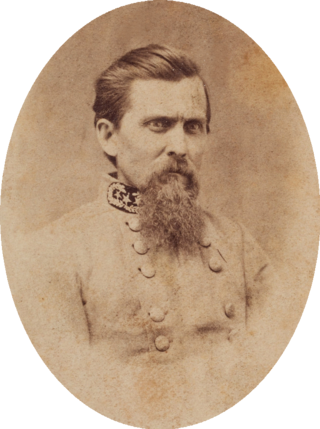
Major-General John George Walker was a Confederate general in the American Civil War. He served as a brigadier general under Stonewall Jackson and James Longstreet, before commanding the Texas Division unit in the Trans-Mississippi Department, known as Walker's Greyhounds for their speed and agility. He was ordered to disrupt U.S. Grant's supply-line opposite Vicksburg, Mississippi, but Grant had managed to cross to the East Bank, and Walker was reduced to minor operations, one of them against some of the first African-American troops to serve in battle. He was able to make a bigger contribution to the Red River Campaign in support of General Richard Taylor.

James Wolfe Ripley was an American soldier who served as a brigadier general in the Union Army during the Civil War. In 1861, he was selected to be the 5th Chief of Ordnance for the United States Army Ordnance Department. In the early days of the war, he was instrumental in not modernizing the artillery's ordnance. Additionally, Ripley also delayed the introduction of repeating firearms, particularly the Gatling gun and the Spencer rifle, into U.S. arsenals, an act that has been widely criticized by later historians.

Hamilton Prioleau Bee was an American politician in early Texas; he was secretary of the Texas Senate in 1846. He served nearly 10 years as representative to the state house beginning in 1849, and for one term as Speaker of the Texas House of Representatives.
A. P. Hill's Light Division was an infantry division in General Robert E. Lee's Confederate Army of Northern Virginia during the American Civil War. Originally including six brigades, the division's first commander starting May 27, 1862 was then Major General A. P. Hill. Major Generals William Dorsey Pender and Cadmus M. Wilcox commanded a reorganized Light Division in the Army of Northern Virginia after Hill's promotion to corps command and Pender's death at the Battle of Gettysburg, respectively.
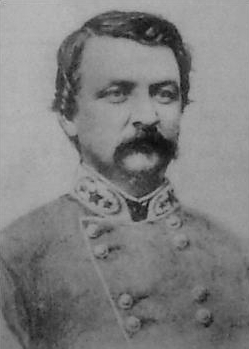
James Patrick Major was a career U.S. Army officer and a Confederate brigadier general during the American Civil War.

John Horace Forney was a farmer, civil engineer, and major general in the Confederate States Army during the American Civil War. Being promoted to the rank of major general on October 27, 1862, Forney participated in the Battles of First Bull Run and Vicksburg before being captured. He held several other commands until the end of the Civil War, living in Alabama until his death in 1902.
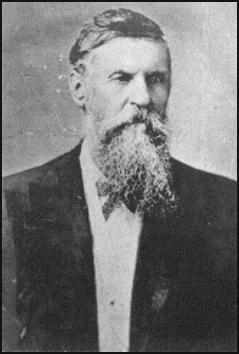
William Steele was a career military officer and businessman who served as the 16th adjutant general of Texas from 1874 until 1879. He previously served as a senior officer of the Confederate States Army who commanded cavalry in the Trans-Mississippi Theater of the American Civil War.

The Battle of the Mimbres River was a surprise attack launched by a troop of American militia against an encampment of Chiricahua Apaches along the western shore of the Mimbres River.

Thomas Turner Fauntleroy was a Virginia lawyer, state legislator from Fauquier, Regular Army officer, slaver, and briefly a Virginia military officer at the beginning of the American Civil War who refused a commission as brigadier general in the Confederate States Army.
The Battle of Cookes Spring was a skirmish which took place between Apache raiders and the United States Army on March 9, 1857. Apache raiders were tracked through the frontier by a party of U.S. Army cavalry who intercepted the native warriors at Cooke's Spring in the Black Range of New Mexico.
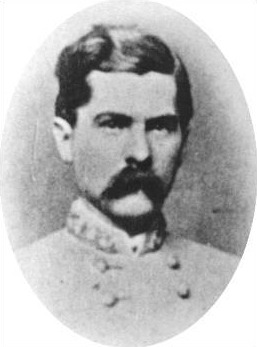
William Polk Hardeman was a Confederate States Army brigadier general during the American Civil War. He had fought in the Texas War of Independence in 1836. He was a member of the Texas Rangers and fought in the Mexican-American War in 1846–1847. During the Civil War, he participated in Brigadier General Henry Hopkins Sibley's New Mexico Campaign and in the Red River Campaign. He had a variety of occupations after the war, including superintendent of public buildings and grounds at Austin, Texas.

Horace Randal was a Confederate States Army colonel during the American Civil War. Randal was mortally wounded while commanding a brigade at the Battle of Jenkins' Ferry, Arkansas, on April 30, 1864, dying two days later. Confederate President Jefferson Davis did not act upon a request made by General E. Kirby Smith on November 8, 1863, to promote Randal to brigadier general. After Randal's performance at the Battle of Mansfield, General Smith, as the Confederate commander of the Trans-Mississippi Department, assigned Randal to duty as a brigadier general on April 13, 1864. Randal was not officially promoted. Jefferson Davis subsequently revoked Smith's appointment of Randal as a brigadier general.

Wilburn Hill King was a Confederate States Army colonel during the American Civil War. He was assigned to duty as a brigadier general by General E. Kirby Smith but he was not officially appointed and confirmed to that grade.
Robert Plunket Maclay was a Confederate States Army major during the American Civil War. On May 13, 1864, he was assigned to duty as a brigadier general to rank from April 30, 1864, by General E. Kirby Smith. He was never officially appointed by Confederate President Jefferson Davis and confirmed by the Confederate Senate to that grade.
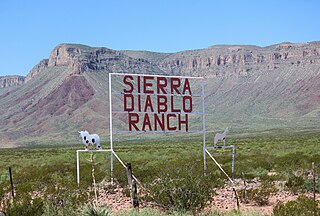
The Sierra Diablo is a small mountain range in the US state of Texas, extending north and south along the border between Hudspeth and Culberson counties. It is in the Chihuahuan Desert, and is near Van Horn, Texas.















